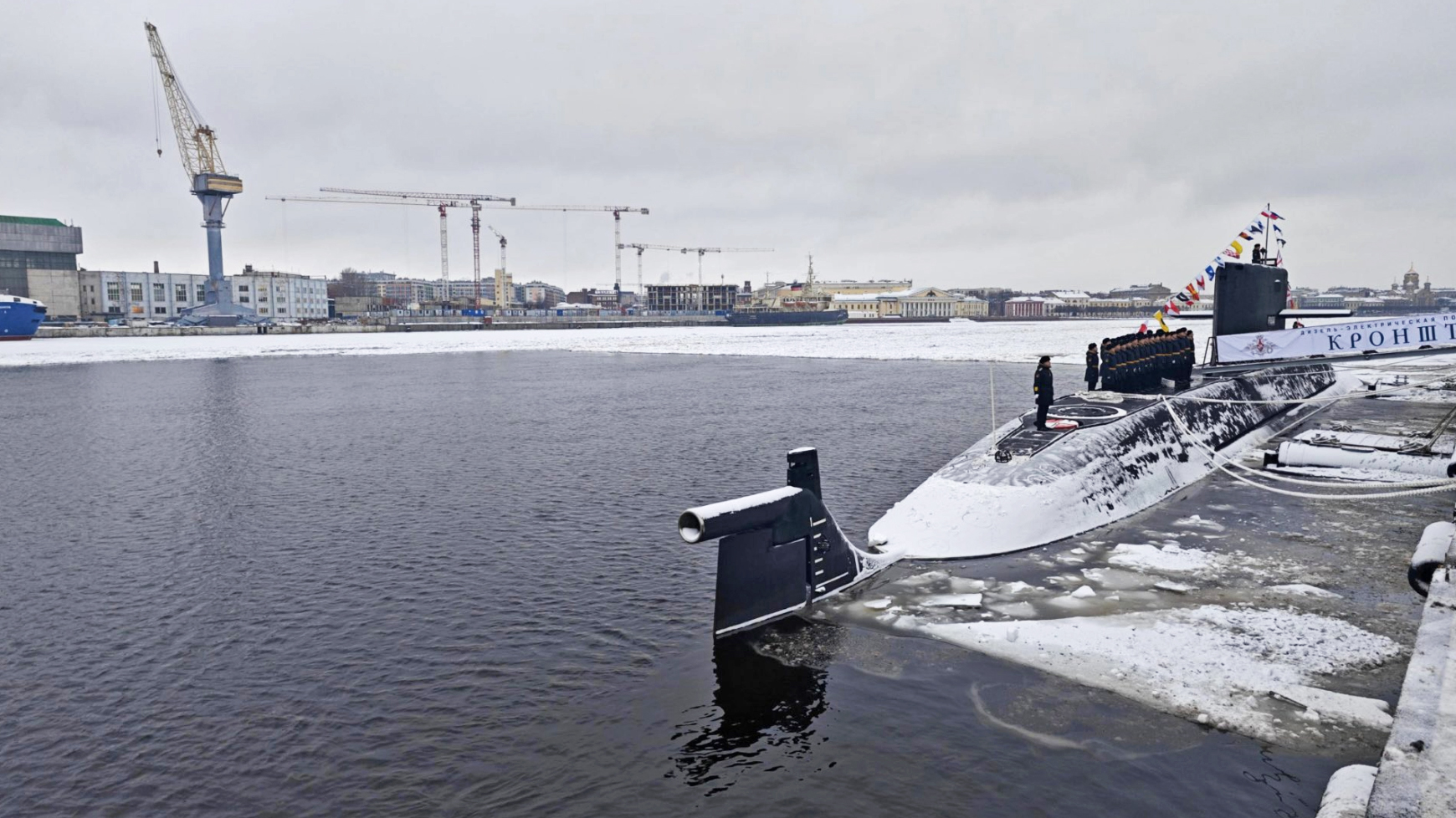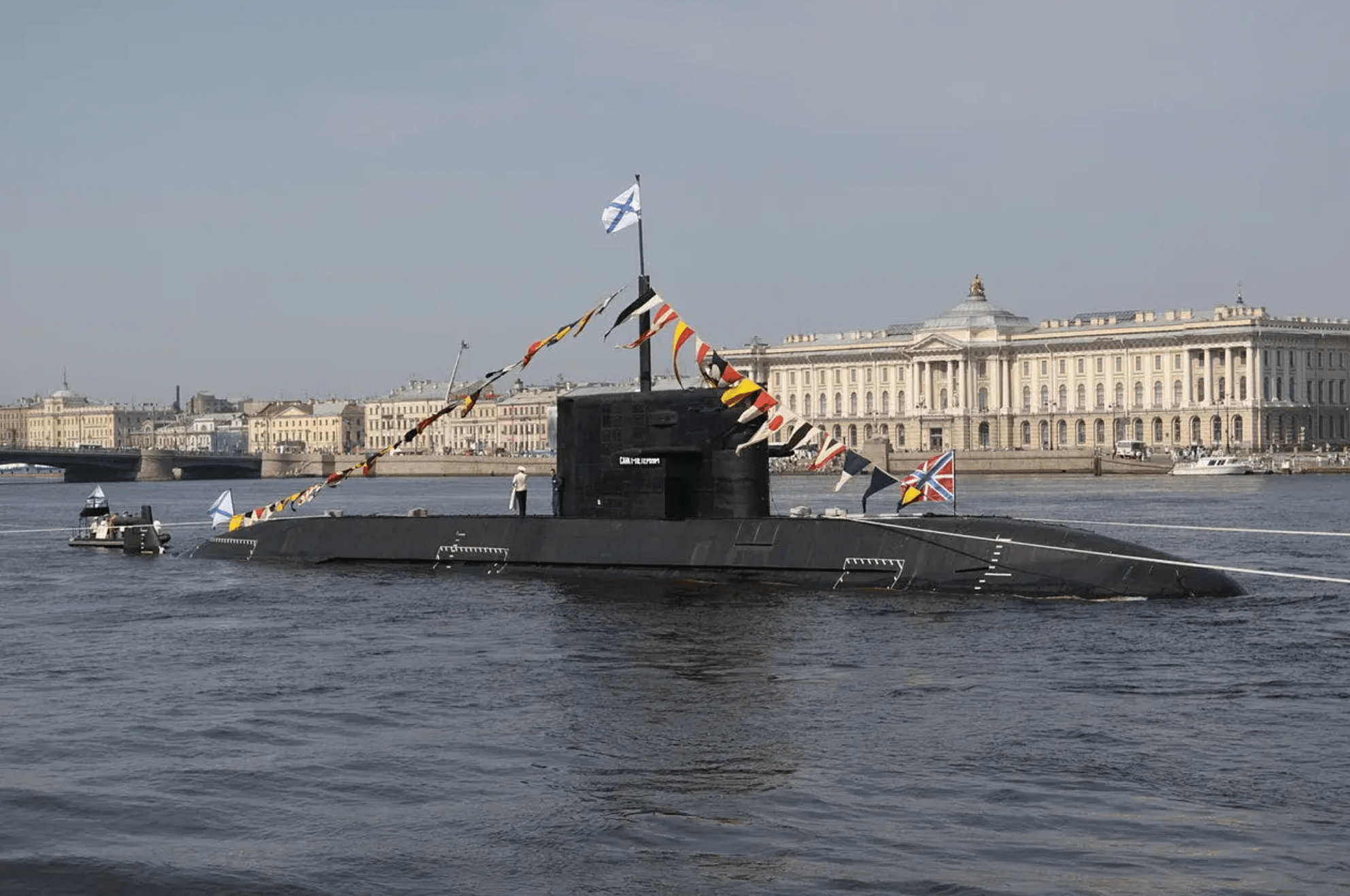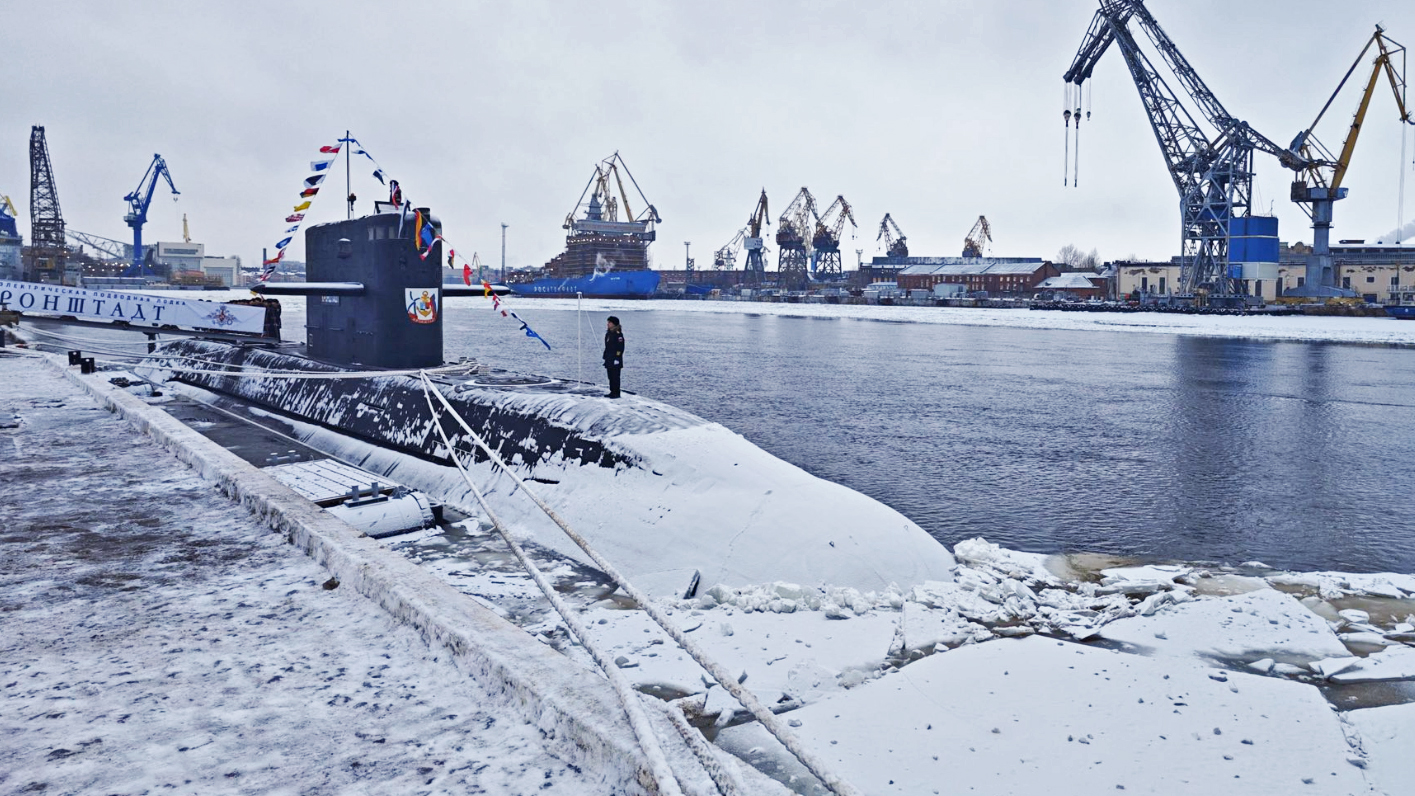The Russian Navy has received its first series-produced Project 677 Lada class submarine, named Kronstadt. Development of the new boat has been dogged by problems, leading to long delays, but its acceptance by the Northern Fleet confirms that, unlike the U.S. Navy, the Russian Navy remains committed to fielding new conventionally powered submarines, as well as their nuclear-powered brethren.
Zvezda, the Russian Ministry of Defense’s media network, today reported on the commissioning of the Kronstadt into the Northern Fleet’s 161st Submarine Division. At the ceremony, likely held at the naval base of Polyarny, in the Murmansk region, the St. Andrew’s flag of the Russian Navy was presented to the commander of the new submarine by the head of the Russian Navy, Nikolai Evmenov.
Built at the Admiralty Shipyards in St. Petersburg, the Kronstadt is around 200 feet long and has a displacement of 2,700 tons when submerged. Its armament includes Kalibr land attack cruise missiles — a weapon used extensively in Russia’s war in Ukraine — launched from the six 21-inch torpedo tubes. These can also be loaded with torpedoes or mines.
The Russian Ministry of Defense claims a diving depth of more than 300 meters (984 feet) and the ability to operate submerged for relatively long periods without needing to surface to recharge its batteries.
Other notable features include extensive automation, resulting in a crew of just 35 people.

“We have created a whole series of new equipment, more than 130 units, which were created on new principles, which made it possible to make this boat more advanced and more combat-ready,” said Igor Vilnit, the general director of the Central Design Bureau for Marine Engineering, also known as Rubin, the submarine’s developer.
After a long period in which its primarily Cold War-era submarine fleet languished, the Russian Navy has, over the last decade or so, seen more resources made available, leading to an uptick in operations, including far out into the Atlantic, as you can read about here. In the last 10 years, the Russian Ministry of Defense states that the navy has received 24 submarines of various designs — eight times more than when compared to the preceding decade.
“If 20 years ago the delivery of each boat was unusual, today we are beginning to get used to the fact that this happens regularly,” stated Viktor Evtukhov, Russia’s deputy minister of industry and trade. “Almost every month, either a surface ship or a nuclear, diesel-electric submarine is transferred to the fleet,” he boasted.
However, the path to getting the Kronstadt into service was not easy.
The Project 677 Lada class was developed as the successor for the Kilo class, an aging design that still constitutes the majority of Russia’s conventional submarine fleet. But the Lada has been a long time coming, forcing Russia to continue building the less advanced Project 636.3 Improved Kilo class.

Compared to the Kilos, the Lada features an all-new design, including single hull construction, a towed array sonar, and other modern features. As well as the towed sonar, the Lada is also understood to be fitted with a conformal array, installed around the bow. According to naval warfare analyst H. I. Sutton, the conformal bow array could be the largest of its kind fitted to any non-nuclear submarine.
The exact capabilities of the latest Russian sonar technology are unclear, but if effective, the Lada sonars could provide a critical advantage in detecting hostile submarines before they are discovered themselves.
Russian efforts to develop an advanced propulsion system for the Lada class have been less successful.
It was planned to fit these boats with an air-independent propulsion (AIP) system, which would greatly increase the time they can stay submerged and make them harder to detect. If AIP works properly, it can provide a diesel-electric submarine with capabilities approach those of nuclear-powered attack submarines, albeit to a limited degree and only in certain ways.
It’s unclear exactly what went wrong, but the Sankt Petersburg, which served as a prototype for the Lada class ran into problems after being commissioned in 2010 and now looks set to be decommissioned. Russia then dropped the AIP for the Lada class, despite having something of a lead in this kind of technology dating all the way back to the 1950s.

In the process, the Kronstadt — the first series-production Lada — was delayed significantly, being laid down in 2005 and launched in 2018, but only commissioned today.
There has been some talk about the lack of AIP being overcome with the use of Lithium Ion batteries, which is a growing trend you can read all about here, although it isn’t clear if this is the case with Kronstadt or its future sister boats. If it is the case, these submarines would be able to have extreme submerged endurance with very quiet operation for a diesel-electric boat.
The Kronstadt and its future sister vessels (one of which is already undergoing trials, with two more in build, and a fifth ordered) are still formidable weapons, especially when operating in tight littoral confines. Also, the ability of the Lada class to launch land-attack cruise missiles is significant. After all, Kilo class boats have played a major role in attacking targets across Ukraine, with examples assigned to the Black Sea Fleet repeatedly taking part in cruise missile strikes.
In addition to the land-attack Kalibr, the same torpedo tubes can deliver the Klub, a related cruise missile that provides a powerful standoff anti-ship capability. While these weapons are a significant advantage over many NATO diesel-electric submarines, the Lada class does not have a vertical launch system (VLS) which would provide a greater capacity for such weapons.

Should the Lada class work as advertised, it will be an important addition to the Russian Navy, especially with earlier examples of the hard-worked Kilo class needing replacement.
The bigger question is not so much about these boats’ capabilities, but the capacity of Russian industry to build them.
The stresses of the war in Ukraine are being felt in terms of personnel and recruitment as well as industrial output. Combined with sanctions that are putting many advanced components out of the reach of Russian defense manufacturers, it remains to be seen whether Russian shipyards will be able to deliver these submarines as planned and to the required level of quality.
Contact the author: thomas@thewarzone.com
